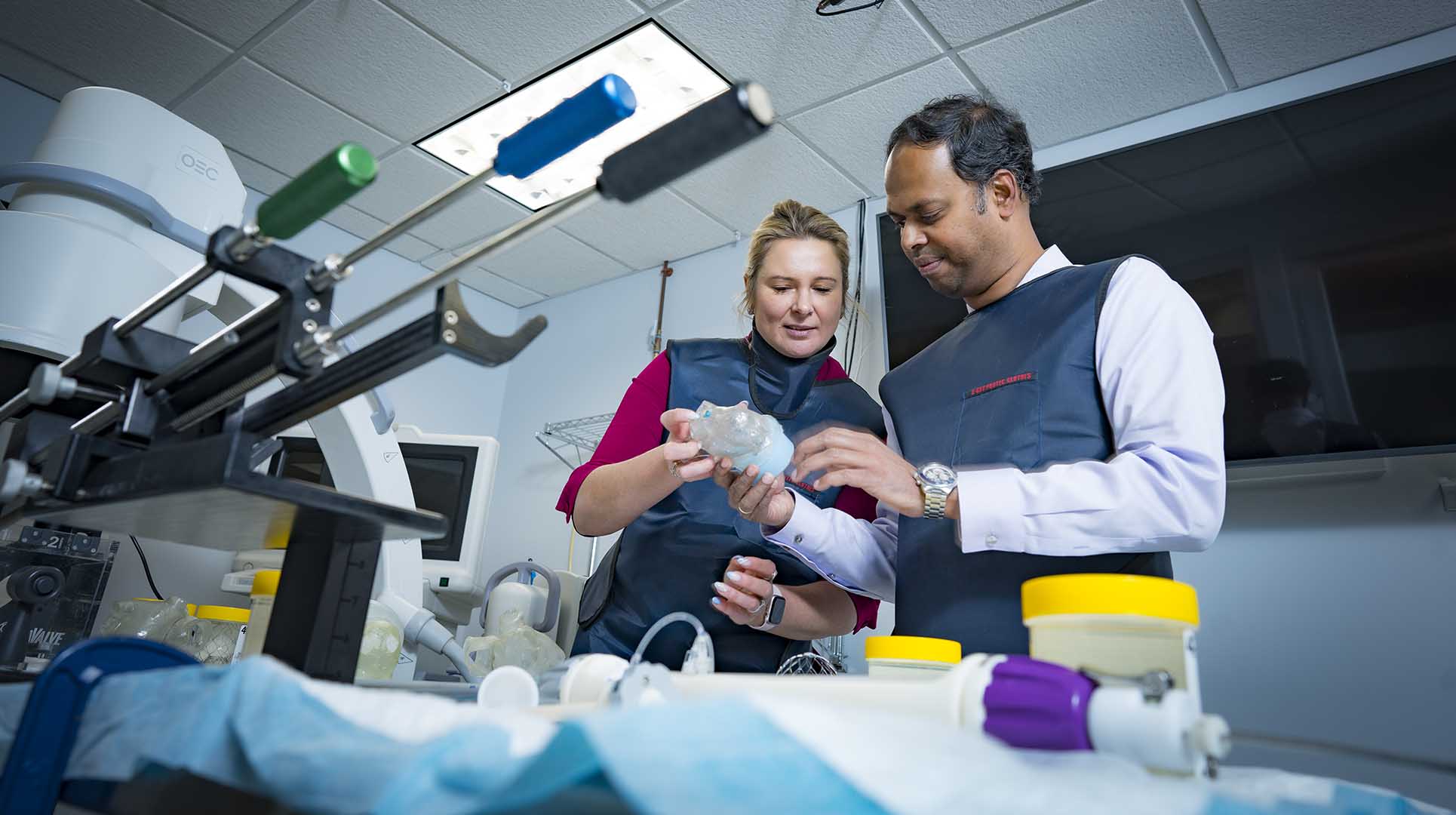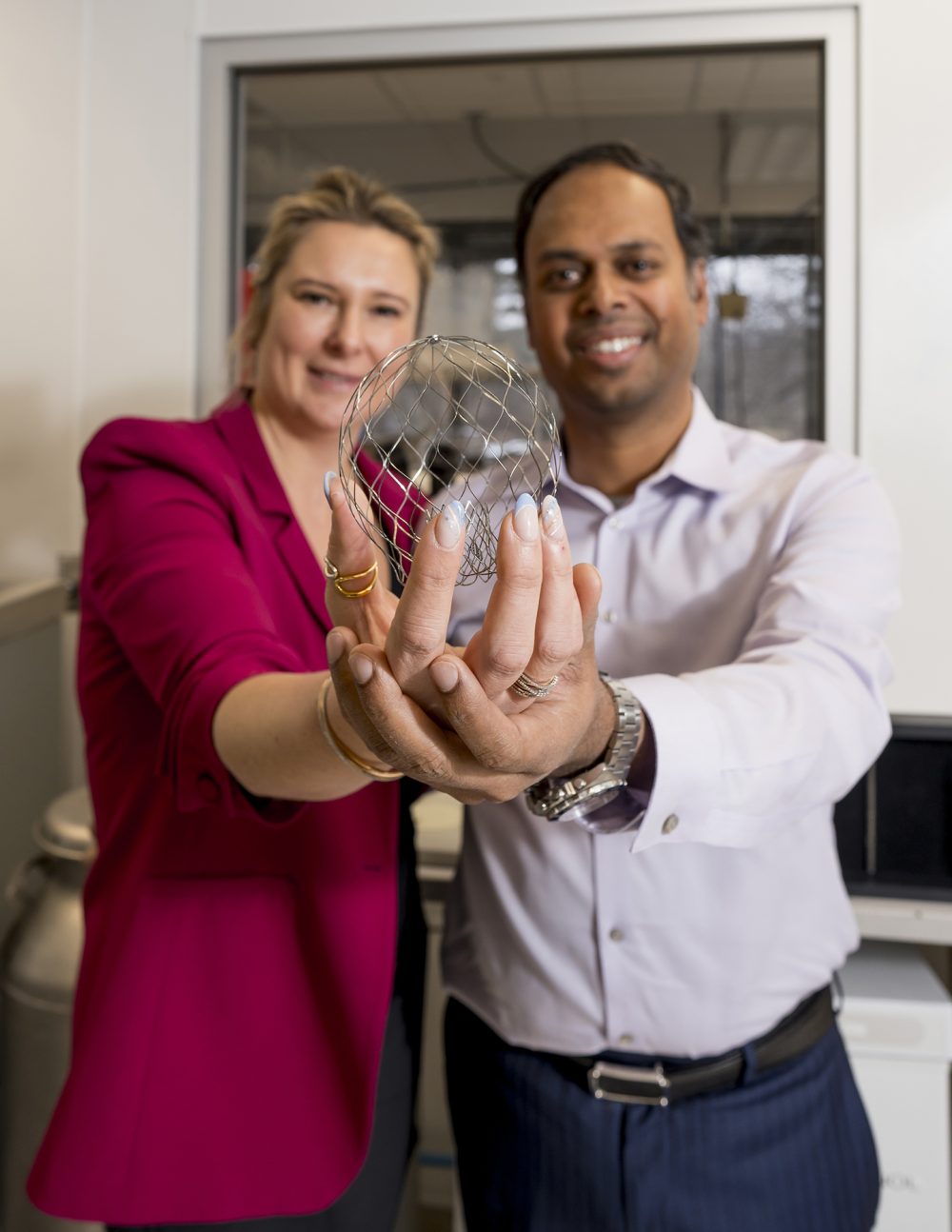State of the Heart

Saravana Kumar ’03 MSME and his wife Katherine Kumar ’03 MSME, ’05 Ph.D. met during their graduate studies in the Department of Mechanical Engineering and Engineering Science. Together, they’ve developed the AltaValve, a medical device that could save the lives of millions of patients suffering from mitral regurgitation (MR). This common type of heart valve disease results in blood leaking backward into the heart each time it pumps, causing many negative health impacts that could ultimately result in death.
A standard treatment for MR is to replace the patient’s leaky mitral valve with an artificial one, which is inserted directly into the valve’s annulus — a ring-like structure that provides the foundation for the valve — just as it would for any other faulty valve in the heart.

The challenge, however, is that the mitral valve lacks the strong foundation in the annulus that is used to mount artificial valves in other parts of the heart. In addition, the mitral valve experiences the highest blood pressure in the heart, which makes it challenging to keep artificial valves in place. It’s for this reason that Saravana Kumar describes the mitral valve as the “Mount Everest” of valve technologies. “It’s by far the largest problem in the cardiovascular space,” he said. “Despite the number of patients with valve disease on the mitral side outweighing the number of patients with other valve diseases, there isn’t a single replacement valve available for mitral because of how hard this problem is to solve.”
The solution is the AltaValve, a mesh sphere that is a prosthetic valve. Implanted above the native mitral valve, it regulates the flow of blood out of the heart’s left atrium and is designed to ensure that blood flowing out of the heart doesn’t leak back in as it is pumped into the rest of the body.
Earlier this year, the Food and Drug Administration granted the AltaValve “Breakthrough Device” status. This designation accelerated the device’s progress toward pivotal trial, the final regulatory hurdle before it is commercially available to millions of patients in need.